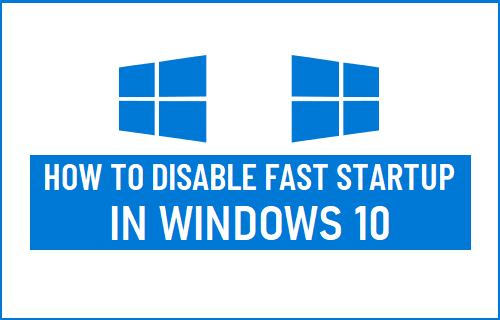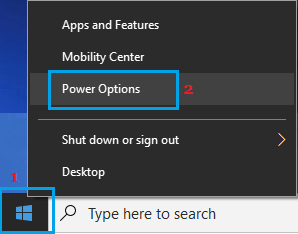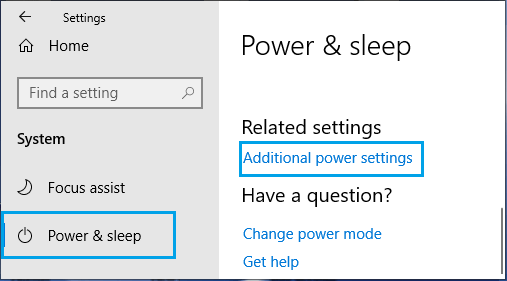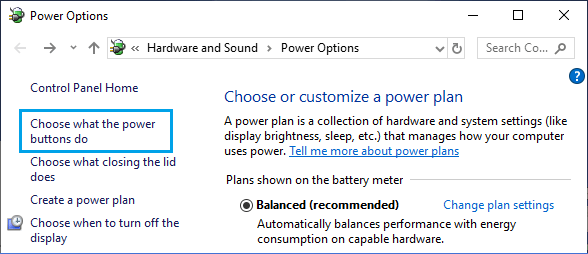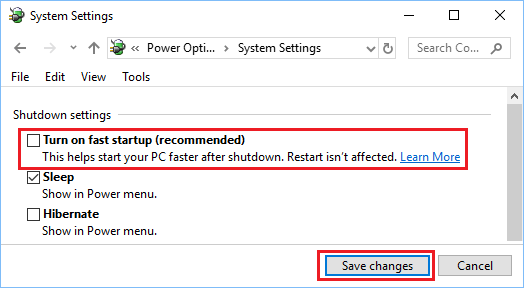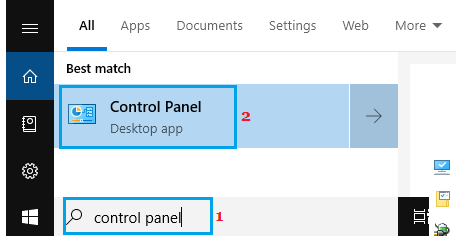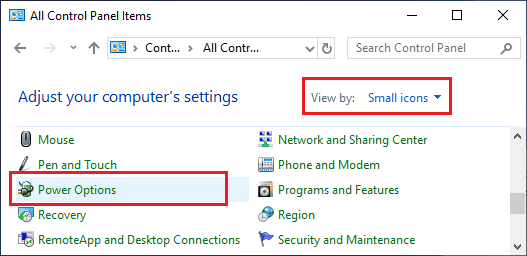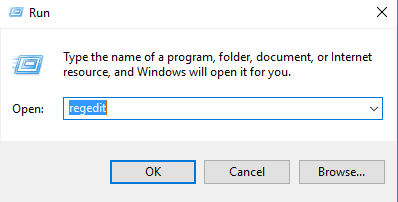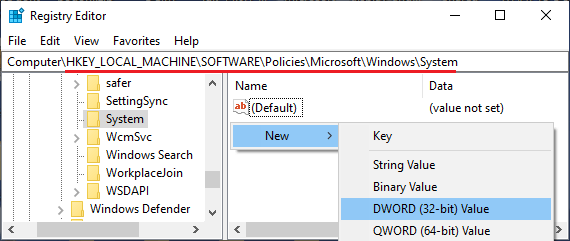What is Fast Startup & How Does it Work?
The Fast Startup feature in Windows 10 forces the computer to enter a deeper state of hibernation mode, instead of completely shutting down. When a Fast Startup enabled computer is shut down, it closes all programs/files, logs off all Users, alerts device drivers to prepare for hibernation, saves the current system state to hibernation file and then switches OFF the computer. When the computer restarts, it use the Hibernation file to spring back to life, without the need to individually reload drivers, kernels and related system files. While the Fast Startup feature can be easily disabled, it is known to return back and get autoamtically enabled on the computer after a major Windows update.
Why Disable Fast Startup?
While most users continue using Fast Startup without even being aware of it, some users want to disable Fast Startup for the following reasons.
- Fast Startup prevents the computer from shutting down properly, which results in open files not being saved and updates not being applied during shutdown (they are applied when you restart).
- Depending on the computer, Fast Startup may prevent you from accessing BIOS/UEFI settings during Shut Down.
- While Fast Startup provides significant boost to startup times on computers using HDD drives, it has lesser impact on computers using SSD Drives.
- Fast Startup is known to interfere with encrypted disk images. The solution for this problem is to manually dismount encrypted drivers before shutdown.
- When you shut down a Fast Startup enabled computer, it locks down the Hard Drive and prevents it from being accessed using another operating system (Dual Boot).
- Fast Startup uses the Hibernate File, which takes up storage space. If you are using Dual Boot, it is recommended that you disable Fast Startup, as users have reported instances of File and Hard Disk corruption.
1. Disable Fast Startup Using Settings
The easiest way to disable Fast Startup is by going to Power Options settings on your computer.
Right-click on the Start button and click on Power Options.
On the next screen, scroll down in the right-pane and click on Additional Power Settings Link.
On Power Options Screen, click on Choose What the Power Buttons Do link.
On the next screen, scroll down to “Shutdown Settings” and uncheck Turn on fast startup option.
Click on Save Changes button. This will disable Fast Startup on your computer, until the next major Windows 10 update. Note: If you do not see the Fast Startup option, it means that Hibernate Mode is not enabled on the computer. You can quickly enable Hibernate Mode by opening Command Prompt and executing powercfg/hibernate on command.
2. Disable Fast Startup Using Control Panel
If link to “Additional Power Settings” is not available on your computer, you can disable Fast Startup by using Control Panel.
Type Control Panel in the Seach bar and click on Control Panel Desktop App in the Search results.
On Control Panel screen, switch to Large or Small Icons view and click Power Options.
On Power Options screen, click on Choose What the Power Buttons Do.
On the next screen, scroll down to “Shutdown Settings” and uncheck Turn on fast startup option.
5 Click on Save Changes to save and implement this change on your computer.
3. Permanently Disable Fast Startup Using Registry
This method should prevent Windows 10 from enabling Fast Startup via an update. It is recommended that you backup registry files before going ahead with these steps.
Right-click on the Start button and click on Run. In Run Command window, type regedit and click on OK.
On the Registry screen, navigate to HKEY_LOCAL_MACHINE/SOFTWARE/Policies/Microsoft/Windows/System
Right-click in the right-pane and select New DWORD option.
Name the New DWORD as HiberbootEnabled and make sure its value is 0 (which will be 0 by default).
Exit Registry and restart the computer to implement this change.
How to Enable Remote Desktop (RDP) in Windows 10 How to Free Up Hard Disk Storage Space in Windows 10
